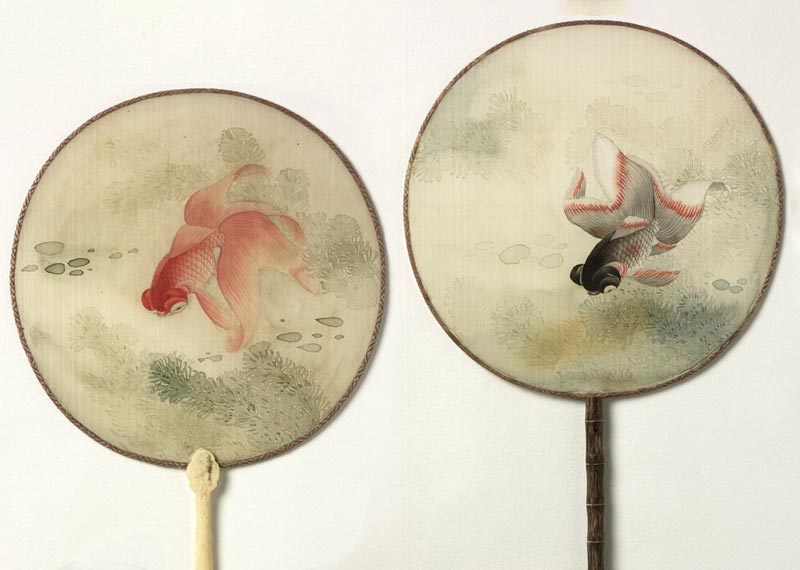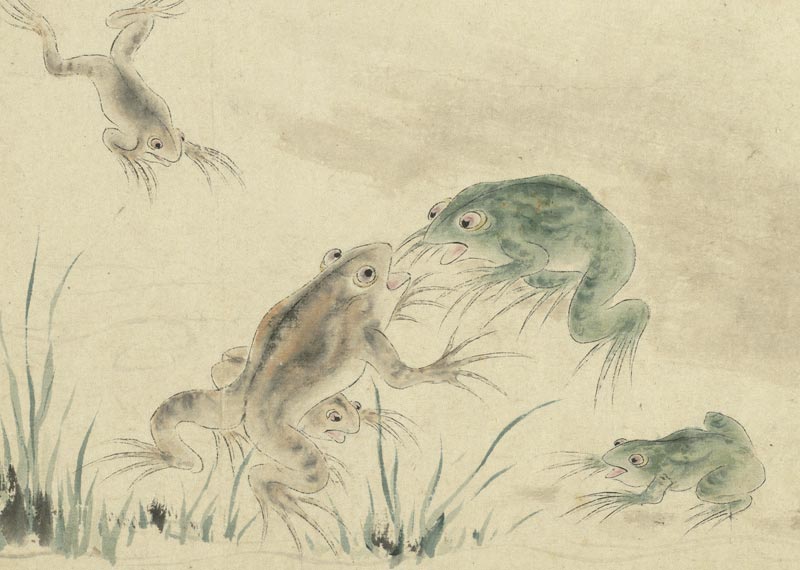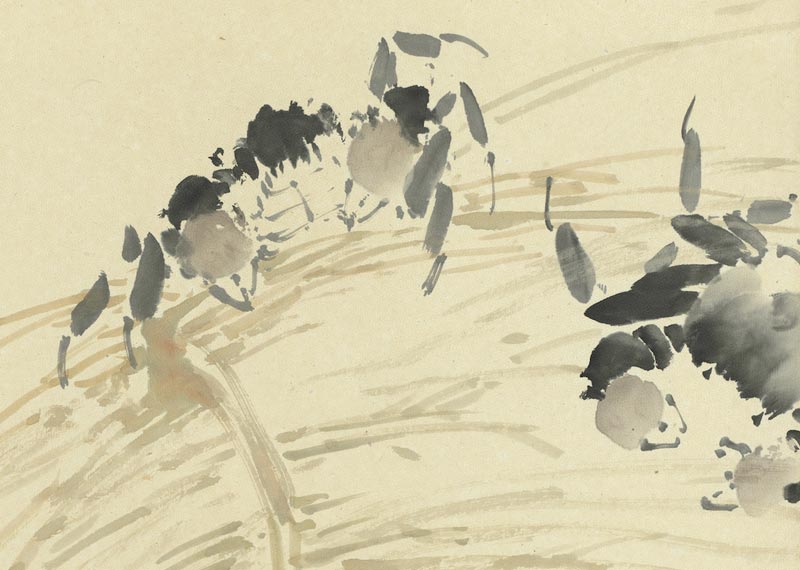Aquatic Creatures Moving at Eased
Hey, kids! Have you ever been to an aquarium? Aren’t all the fish, shrimp, turtles and other creatures there all so lively and interesting to see? Though people many years ago did not have cameras or smart phones, they still were able to capture and record these animals that make water their home. Some depictions are truly lifelike, but others are really exaggerated and different. It’s very fascinating what artists painted! So do you want to know more? Let’s go and take a look at this "aquarium" in painting!
-
 Fish and Water PlantsAnonymous, Qing dynasty (1644-1911)
Fish and Water PlantsAnonymous, Qing dynasty (1644-1911)These two round fans of "dragon-eye, butterfly-tail" goldfish show one black and the other red, their appearance unusually realistic. The artists used water plants and washes of ink and color to create a scene whereby goldfish look as if swimming leisurely in the water. Combined with the round fan frame, the viewer cannot help but be reminded of an effect similar to a magnifying glass. The painters took the movement of the goldfish and condensed it within the static surface of a fan, making for a very convenient work of both appreciation and use.
-
 Frog FightHua Yan (1682-1756), Qing dynasty
Frog FightHua Yan (1682-1756), Qing dynastyThis painting depicts the corner of a pond, where two larger frogs with mouths open appear staring at each other. Judging from their stance, it looks as if they are about to engage in a fight. Below the yellowish frog on the left crouches a younger frog, as if hiding there to seek protection from its mother. Another young frog of the same color is seen approaching its mother, perhaps to join in the battle about to commence. Next to the green frog is another small frog that seems to be joining in the commotion. Though appearing to be a static composition, it is actually filled with an atmosphere of energy and tension.
-
 Crabs and StalksHu Ko-min (1909-1991), Republican period
Crabs and StalksHu Ko-min (1909-1991), Republican periodHu Ko-min (sobriquets Tiegu weng and Yangbi xuanzhu), a native of Wujin in Jiangsu (modern Wujin District, Changzhou City), traveled across the Strait in 1949 and settled down in Taiwan.
This painting employs the naturally spreading quality of the brush combined with variations in ink tones to create gradations of dark, light, wet, and dry that successfully render the activities and poses of the crabs seen here. The crabs are also rendered with light brown tones to express their hairy quality, indicating that they are probably mitten, or hairy, crabs. At the top is a crab with a mark similar to the character for "king" ("wang 王"), suggesting a commander for the rest and perhaps a sense of humor on the part of the artist. The overlapping stalks and tassels of grain on the ground show that the time of year is late autumn, when grain is harvested.